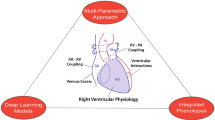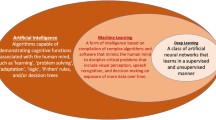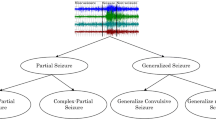Abstract
Myocarditis is a common disease of the pediatric circulatory system, and its clinical manifestations are diversified. Especially in older patients, chest tightness, shortness of breath and palpitations may occur. However, some patients may have no distinct clinical symptoms and may occasionally experience symptoms during the diagnosis and treatment of respiratory infections, such as arrhythmias in infants and young patients. Because the clinical manifestations of myocarditis are not typical, the specificity and sensitivity of serum myocardial enzyme detection are not very high, which hinders a definitive diagnosis of certain cases by clinicians. However, degeneration, necrosis and inflammatory diseases of cardiomyocytes can affect myocardial conductivity and stress. In patients with myocarditis, an electrocardiogram (ECG) signal changes abnormally; thus, the ECG remains an indispensable means of diagnosing myocarditis. Biomedical signal detection and signal processing techniques can facilitate the study of biological and physiological systems and assist physicians in the diagnosis and treatment of patients. However, traditional manual analysis of ECG methods has some drawbacks. Due to the extensive variety of electrocardiograms, variations in various waveform patterns are subtle and complex. Clinicians often need a solid theoretical foundation and a wealth of clinical experience to make a correct assessment using an ECG. If the medical expert is engaged in a large number of ECG recognition studies for a long time, fatigue may develop and cause misdiagnosis. In addition, the manual analysis of an ECG is part of the postmortem analysis, achieving a real-time diagnosis is difficult, and the resulting delay is likely to cause critical patients to miss the best treatment opportunity. To solve this problem, we have developed a dynamic electrocardiogram medical-assisted diagnosis system to assist medical experts in the diagnosis and treatment of patients with myocarditis. Our system can process the collected ECG signals, obtain waveform parameters, and automatically perform an analysis according to an expert’s clinical experience. These parameters provide diagnostic recommendations.







Similar content being viewed by others
References
Wu W, Pirbhulal S, Zhang H, Mukhopadhyay SC (2019) Quantitative assessment for self-tracking of acute stress based on triangulation principle in a wearable sensor system. IEEE J Biomed Health Inf 23(2):703–713
Poulakaki N, Papalois A, Papadimitriou D, Prachalias A, Stevens C, Biomed C, Papadimitriou L, John P (2001) First clinical application of a second generation HepatAssist bioartificial liver support system without charcoal associated with neurological recovery in a fulminant hepatic failure patient. Gastroenterology 120(5):A543–A543
Le M, Christine L, Freemont Anthony J, Hoyland Judith A (2006) A preliminary in vitro study into the use of IL-1Ra gene therapy for the inhibition of intervertebral disc degeneration. Int J Exp Pathol 87(1):17–28
Nadi S, Madhuka J, Pham TT (2018) A low-complexity algorithm for detection of atrial fibrillation using an ECG. Physiol Meas 49(10):28–42
Lee JW, Lee GK (2014) Applying nonlinear dynamics to ECG signal processing. Int J Control Autom Syst 3(1):137–142
Fedotov AA (2014) Baseline drift filtering for an arterial pulse signal. Meas Tech 57(1):91–96
Felblinger J, Blondé J-P, Jovanovic S (2011) Capteur ECG intelligent pour la synchronisation des séquences en IRM et le monitorage des patients. IRBM 32(3):179–184
Sesay M, Vignes JR, Stöckle M, Mehsen M, Boulard G, Maurette P (2003) Spectral analysis of the ECG R-R interval permits early detection of vagal responses to neurosurgical stimuli. Ann Fr Anesth Reanim 22(5):421–424
Amonkar G, Rupani A, Shah V, Parmar H (2009) Sudden death in tuberculous myocarditis. Cardiovascular Pathology 18(4):247–248
Taboulet P, Smith SW, Brady WJ (2013) Diagnostic ECG du syndrome coronarien aigu. Partie 4. Les diagnostics différentiels. Annales Françaises De Médecine Durgence 3(2):240–247
Bate MR, Bonnell IA (2015) The origin of the initial mass function and its dependence on the mean Jeans mass in molecular clouds. Mon Not R Astron Soc 356(4):1201–1221
Schmidt M, Krug JW, Rose G (2016) Reducing of gradient induced artifacts on the ECG signal during MRI examinations using Wilcoxon filter. Curr Direct Biomed Eng 2(1):175–178
Pezzilli R, Bellacosa L, Barakat B (2010) Abdominal pain and ECG alteration: a simple diagnosis? Adv Med Sci 55(2):333–336
Atanassova P, Tokmakova M, Djurkova A, Naydenov V, Chalakova N, Dimitrov B (2006) Abnormal ECG patterns during the acute phase of subarachnoid hemorrhage in patients without previous heart disease. Cent Eur J Med 1(2):148–157
Schmidt M, Krug JW, Schumann A, Bär K-J, Rose G (2015) Estimation of a respiratory signal from a single-lead ECG using the 4th order central moments. Curr Direct Biomed Eng 1(1):61–64
Schmidt M, Krug JK, Rose G (2016) Real-time QRS detection using integrated variance for ECG gated cardiac MRI. Curr Direct Biomed Eng 2(1):255–258
Lv S, Wu Q, Sun E (2015) Autophagy activated by bluetongue virus infection plays a positive role in its replication. Viruses 7(8):4657–4675
Wu Q, Ye J, Yang J (2016) Relation between carotid intima-media thickness and diastolic augmentation index in Chinese population. In: 9th International congress on image and signal processing on biomedical engineering and informatics (CISP-BMEI). IEEE, pp 1761–1765
Calabrese F, Carturan E, Thiene G (2010) Cardiac infections: focus on molecular diagnosis. Cardiovasc Pathol 19(3):171
Baillie TJ, Scherer DJ, Wong TL, Steele PM (2015) Kounis syndrome and hypersensitivity Myocarditis-One and the same? Insights from cardiac magnetic resonance imaging. J Cardiol Cases 12(4):119–122
Isasti G, Manuel José, García-Pinilla Manuel F, Jiménez-Navarro Juan Robledo-Carmona, de Teresa-Galván Eduardo (2014) Elevation of circulating progenitor cells in patients with acute myocarditis. Int J Cardiol 172(3):608
Cunningham MW (2004) T cell mimicry in inflammatory heart disease. Mol Immunol 40(14–15):1121–1132
Dassen WR, Schwab J, Rogg HJ, Pauschinger M, Fessele K, Bareiter T, Bär I, Loose R (2016) Functional and morphological parameters with tissue characterization of cardiovascular magnetic imaging in clinically verified “infarct-like myocarditis”. Fortschr Röntgenstr 188(04):365–373
Mavrogeni S, Tsirogianni AK, Gialafos EJ, Manoussakis MN (2009) Detection of myocardial inflammation by contrast-enhanced MRI in a patient with Churg-Strauss syndrome. Int J Cardiol 131(2):54–65
Dolley YL, Habib G, Lepidi H, Fenollar F, Raoult D (2012) Severe Whipple’s disease with acute myocarditis. Int J Cardiol 159(2):41–52
Hassoun MH, Intrator N, Mckay S, Christian W (2002) Fundamentals of Artificial Neural Networks. Proc IEEE 84(6):906–917
Xiao S, Liu S, Jiang F, Song M, Cheng S (2019) Nonlinear dynamic response of reciprocating compressor system with rub-impact fault caused by subsidence. J Vib Control 25(11):1737–1751
Hu YH, Tompkins WJ, Urrusti JL (1993) Applications of artificial neural networks for ECG signal detection and classification. J Electrocardiol 26(Suppl 1):66–73
Acknowledgements
This work was supported in part by the National Key R&D Program (No. 2018YFC0831006-3 and 2017YFB1400102), the Key Research and Development Plan of Shandong Province (No. 2017CXGC1503 and 2018GSF118228).
Author information
Authors and Affiliations
Corresponding authors
Additional information
Publisher's Note
Springer Nature remains neutral with regard to jurisdictional claims in published maps and institutional affiliations.
Rights and permissions
About this article
Cite this article
Li, Y., Yang, M., Liu, Z. et al. Detection and diagnosis of myocarditis in young patients using ECG analysis based on artificial neural networks. Computing 102, 1–18 (2020). https://doi.org/10.1007/s00607-019-00725-4
Received:
Accepted:
Published:
Issue Date:
DOI: https://doi.org/10.1007/s00607-019-00725-4




